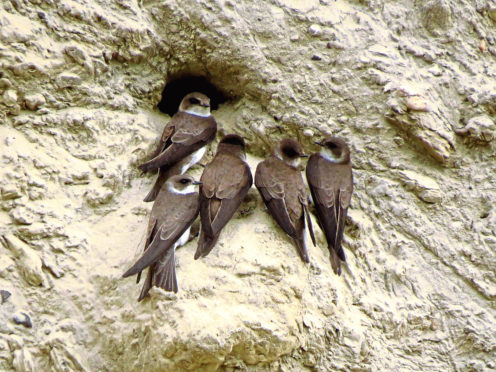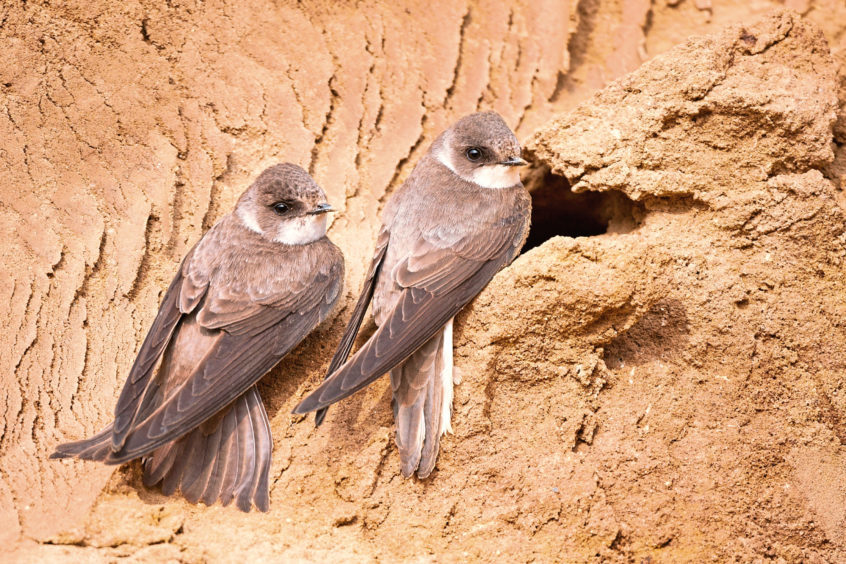I came with high hopes but was ultimately shocked when I reached the wide curve of the river and saw for the first time the long sandy cut by the far edge of the water.
Last year there had been 50 or more sand martin burrows peppered along its side, but now there were barely 10. Was this really the same place where only a year ago hordes of sand martins wheeled and chirruped above the river, with their soon-to-fledge youngsters curiously poking their heads out of their nesting holes?
I sat down on a shingle bank and watched. At least there were some sand martins about and most of the handful of burrows that were on the bank did seem to hold birds. Not all bad news then, but what had happened to this colony? Sand martins are certainly fickle birds, often moving to new areas to nest as some sand banks collapse and new ones are created by the powerful erosive forces of the river. But this little sandy cliff looked in pristine condition; the perfect place to breed.
Perhaps it was the cold of early spring, which delayed the arrival of many migrants. Back in my nearby home village in Strathdevon, house martin and swift numbers are significantly down compared to previous years. I’ve also seen fewer whitethroats, chiffchaffs and blackcaps. But on the plus side, cuckoos have been more abundant in the nearby hills and I’ve also glimpsed more willow warblers.
All very anecdotal and unscientific, but it would be interesting to see if this was a nationwide trend witnessed by others. But such fluctuations, whether local or national, underline the frightening array of dangers faced by our summer migrants each year. A migration across the parched Sahara desert is fraught enough, without then having to face sea crossings, songbird hunters in the Mediterranean and the ever-present threat of inclement weather.
And, of course, their wintering grounds in many parts of Africa face their own environmental pressures from climate change and habitat destruction.
All a bit depressing if pondered upon for too long, so I moved on from the side of the river and struck out across the haugh or flood meadow, the long grass sweeping against my calves. Every so often, ringlet butterflies spiralled into the air and I saw several small tortoiseshells too, which are such beautiful butterflies, with their intricate and vibrant patterning of orange, black, yellow and blue.
But there it was again, something I couldn’t escape from, because another vagary of nature had fluttered right up in front of me. Ringlets are more abundant than ever but small tortoiseshells – which were one of the commonest butterflies in my youth – seem to have declined in numbers over the last decade or so.
Winners and losers – that has always been the way with nature; the only difference is that nowadays it is the of hand of man that is driving such change – and that should worry us all.
Info
Sand martins winter in the Sahel region of Africa, south of the Sahara. They are one of the first of our summer migrants to arrive, often being seen in Scotland from the end of March onwards.


